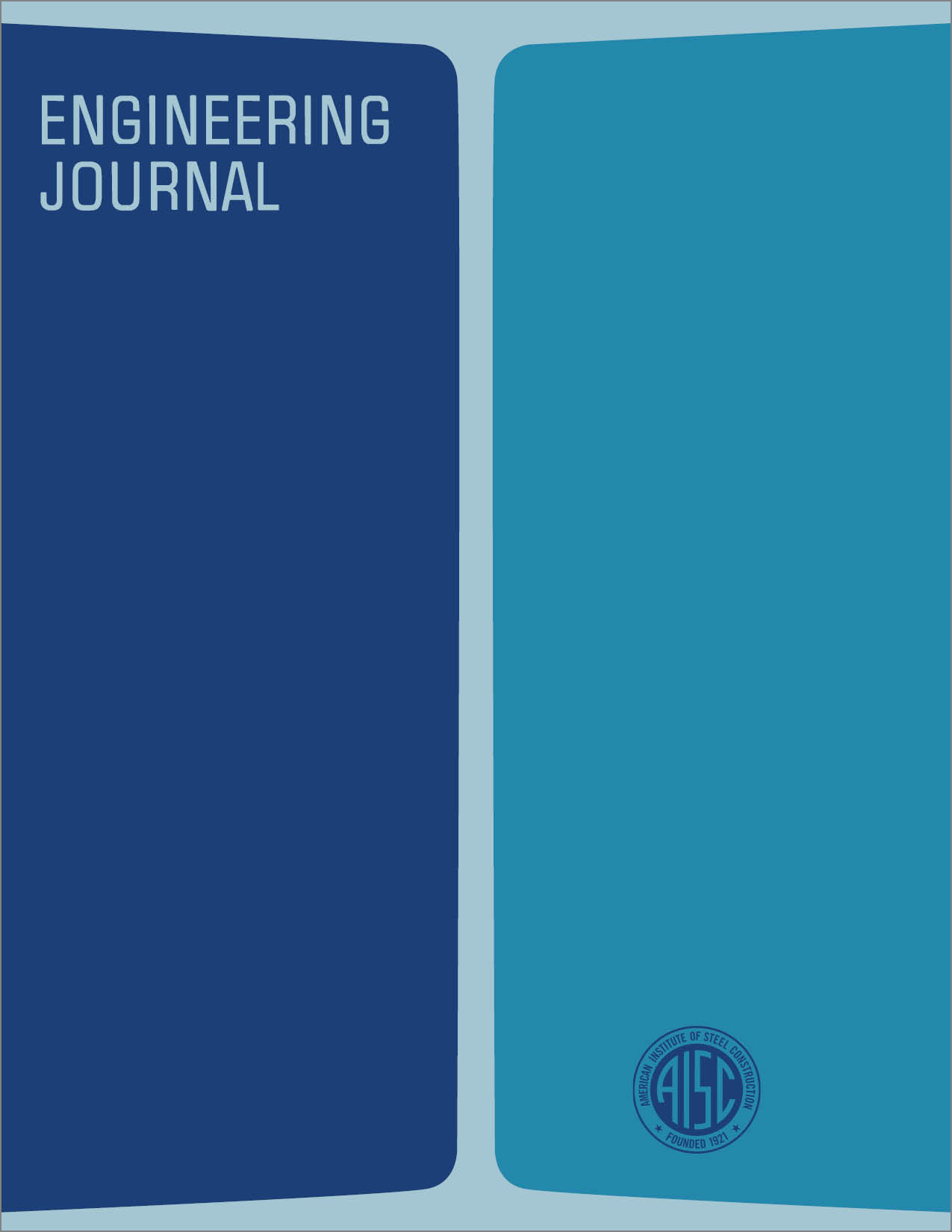Bolted Shear Connections with Painted Surfaces
DOI:
https://doi.org/10.62913/engj.v21i3.420Abstract
In high-strength bolted shear connections, the load transfer between plate components is initially provided by the frictional forces developed by bolt clamping forces and friction characteristics of contact surfaces. A connection which relies on this slip resistance to transfer load is called a friction connection. When the slip resistance is exceeded, the connection slips into bearing to develop the bearing strength (bearing connection). Prior to 1974, paints on the contact surfaces were prohibited in friction connections because some early tests showed they affected adversely the slip load. The fabricator had to mask off the connection area, thus increasing the cost when friction joints and painted steel were specified. In exposed environments, the unpainted contact surfaces resulted in crevice corrosion and a subsequent deterioration of the structural painting system. Design criteria for bolted joints are given in the Specification for Structural Joints Using ASTM A325 or A490 Bolts prepared by the Research Council on Structural Connections (RCSC). The RCSC Specification gives allowable friction forces for nine different contact surface conditions based on a probability of slip concept developed by Fisher and Struik. Three types of paint were recognized for friction surface: organic and inorganic zinc-rich paint and vinyl wash. Many coatings and painting systems, especially vinyl and epoxies, which show significant improvement in corrosion protection, have been developed. Since such coatings are not reflected in the RCSC Specification, their status for use on friction surfaces is unknown.

